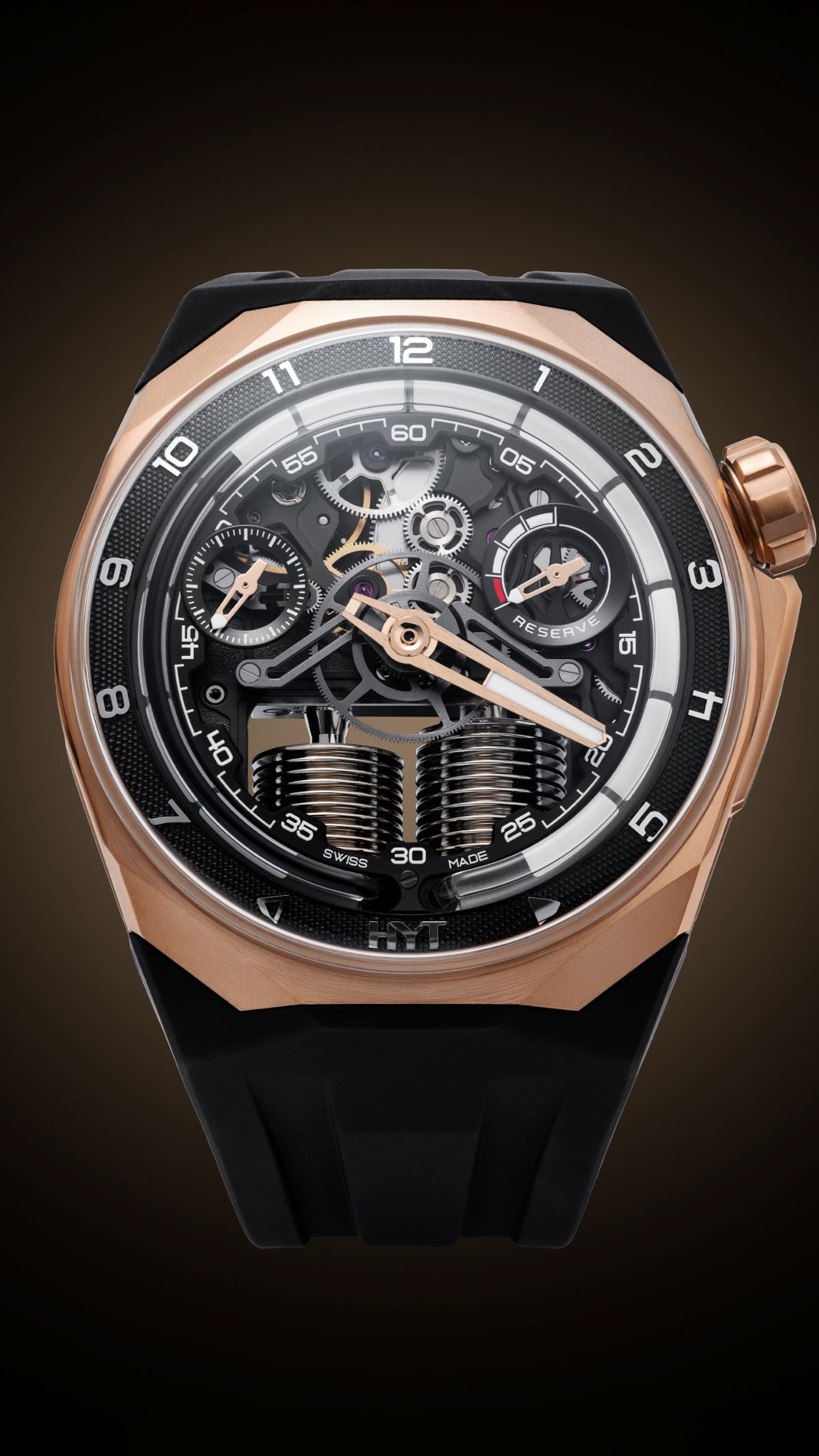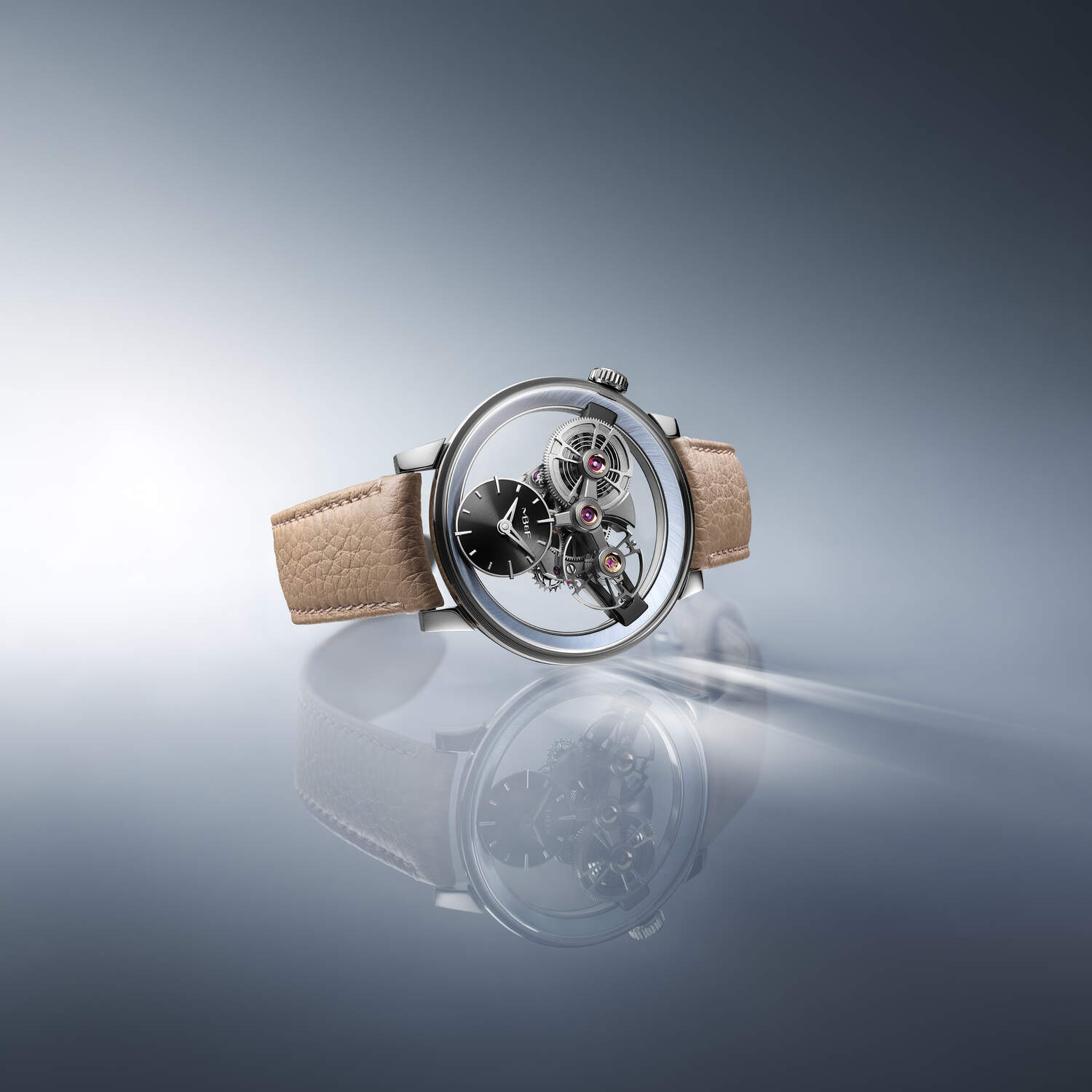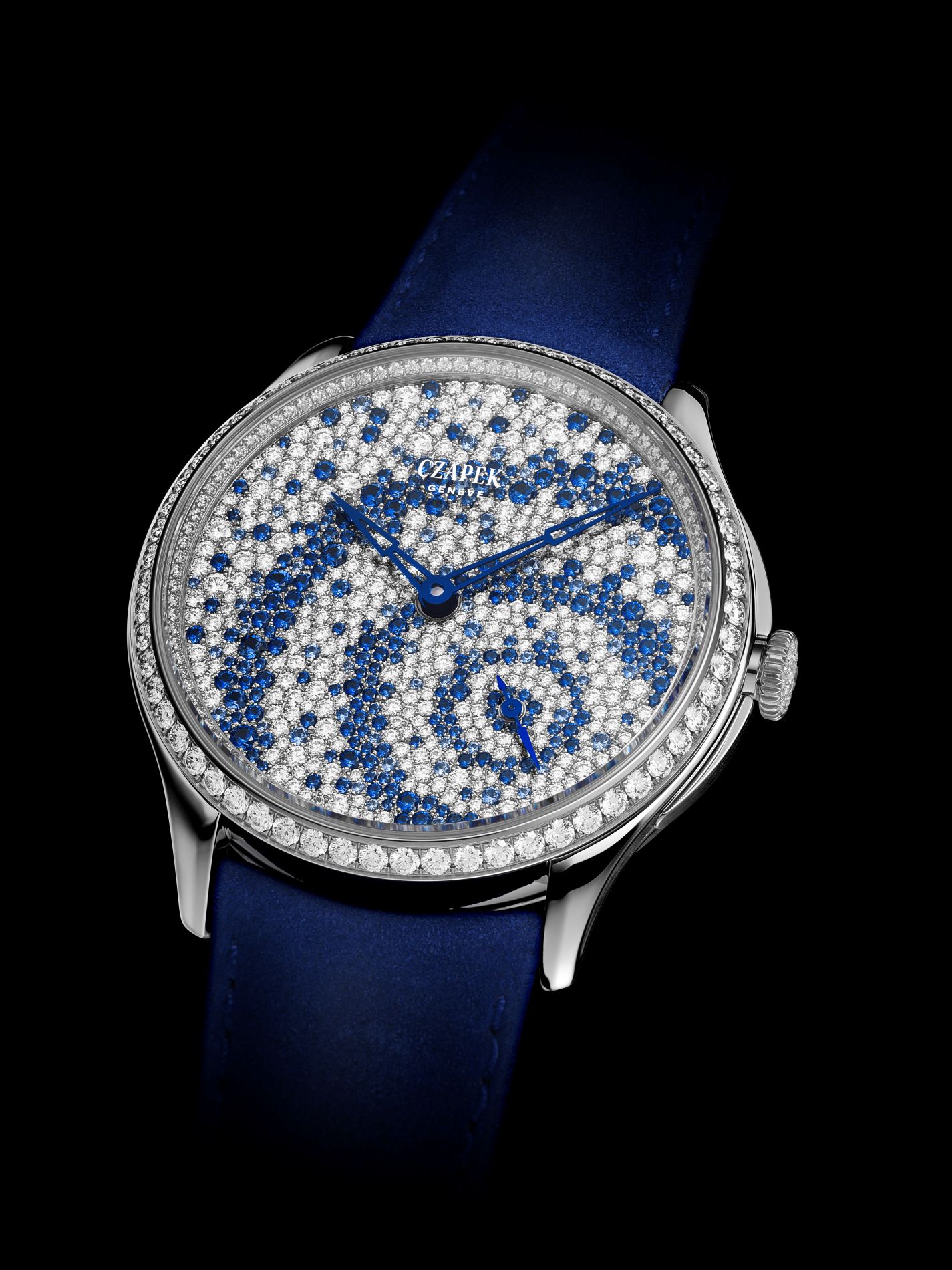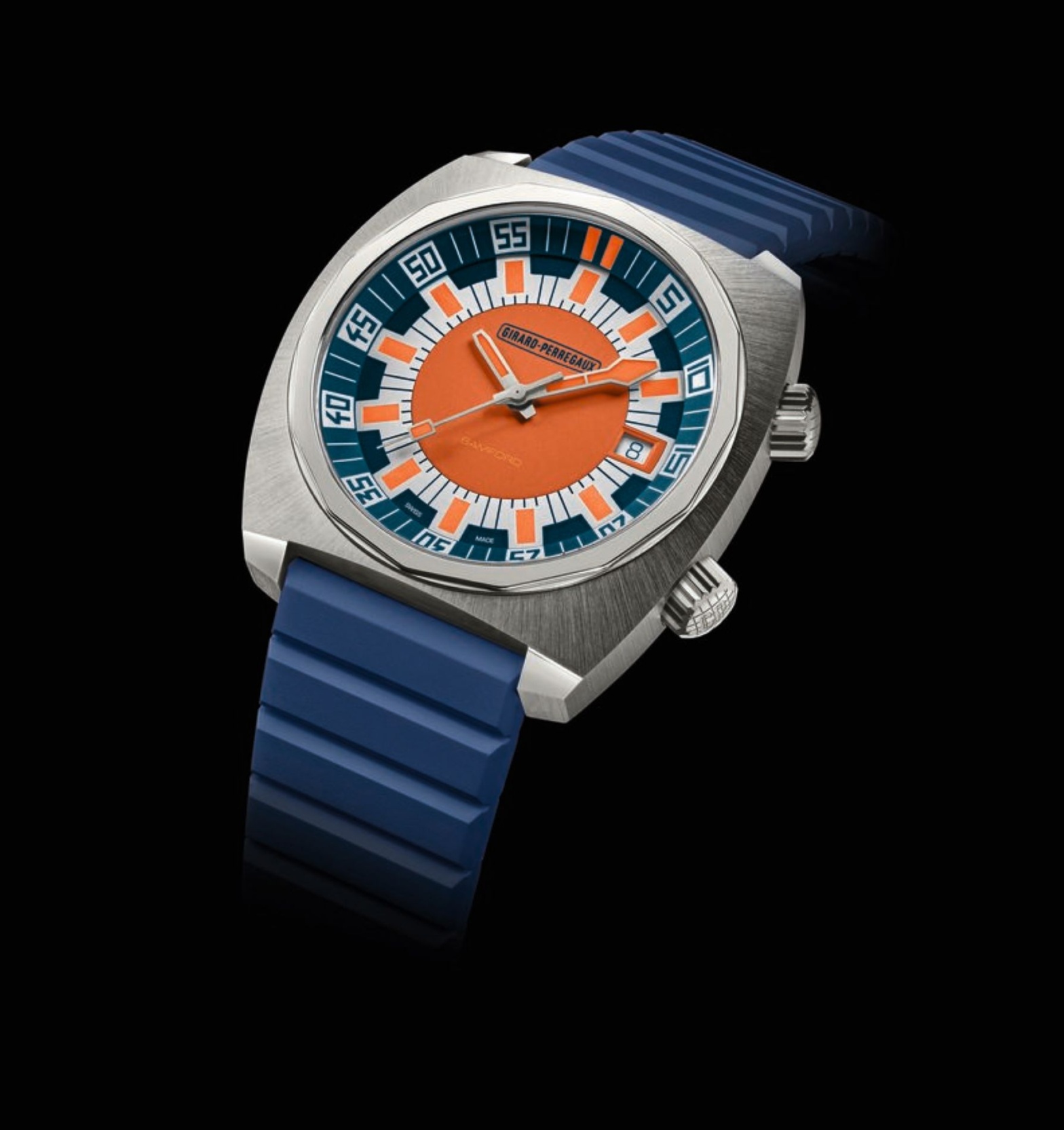WORLDS COLLIDE
The 30-piece limited-edition Freak X Enamel Seddiqi marries métiers d’art techniques with st ate-of-the-art watchmaking, and celebrates the partnership between elite Swiss watchmaker Ulysse Nardin and Ahmed Seddiqi & Sons, the Middle East ’s leading luxury watch retailer.
Ulysse Nardin, the independent Swiss watch maison that has been disrupting haute horlogerie since 1846, is delighted to introduce the new Freak X Enamel Seddiqi, a watch that celebrates shared cultures, traditions and artist ic passions that sp an continents.
The Freak X Enamel Seddiqi is based on the design and movement properties of a 21st century watchmaking icon, Ulysse Nardin’s Freak, which rewrote the horological rulebook when it was introduced in 2001 by pioneering the use of silicon technology in watchmaking.
The exclusive new watch builds on the timeless st ory of the Freak’s ‘no hands and no dial’ movement architect ure, and tells it afresh with an exquisite guilloché and enamelled hour disc that highlights Ulysse Nardin’s mast ery of métiers d’art.
Coloured in “Yas Blue” enamel to echo the piercing elect ric blue of the evening sky as the sun sets over the waters of the Gulf of Arabia, the Freak X Enamel Seddiqi’s hour disc is the work of very skilled artisans at Ulysse Nardin’s Donzé Cadrans Manufact ure in Le Locle and the result of a complex, painst aking process.
First , the gold guilloché hour disc has a texture that gives the watch an additional visual dimension, resulting in a geometric patt ern that gives it a balanced, modern feel. Then Ulysse Nardin’s enamellers add four layers of water-based enamel to it. The enamel begins as a solid, which is then broken down with a pest le and mortar into a fi ne powder, before it is transformed into a past e with water. Between each layer, the disc is fi red at temperatures of 800 degrees Celsius and then cooled.
Cooling takes just one minute. A fi nal, crucial layer of translucent “fondant” enamel gives the disc surface a glossy fi nish that will be immediately recognisable to métiers d’art connoisseurs.
For the enamellers, there’s jeopardy in every layer. The disc will be fi red at least fi ve times and the kiln is merciless: each time, the risk is that the enamel will bubble and sp oil, at which point, the process must st art again.
This tension is one of the reasons skilled enamellers are such a rare breed, and why only the very fi nest watches carry enamel decorations.
Sitt ing on top of this mesmerising hour disc is Caliber UN-230 Manufact ure, an automatic with a 72-hour power reserve. The Freak’s signature carousel fl ying tourbillon features an oversize oscillator and a silicon escapement, and doubles as the watch’s minutes hand, making a full tour of the dial every 60 minutes.
A pointer on the hour disc shows the hour against fl oating baton hour markers.
The watch is cased in 43 mm of grey titanium and comes on a black rubber “ballist ic” st rap with white st itching and a titanium folding buckle. Due to the technical and artisanal complexity of this beautiful horological object , only 30 pieces will be made, and they will only be available through Ahmed Seddiqi & Sons, the United Arab Emirates’ largest and most pioneering luxury watch and jewellery retailer.
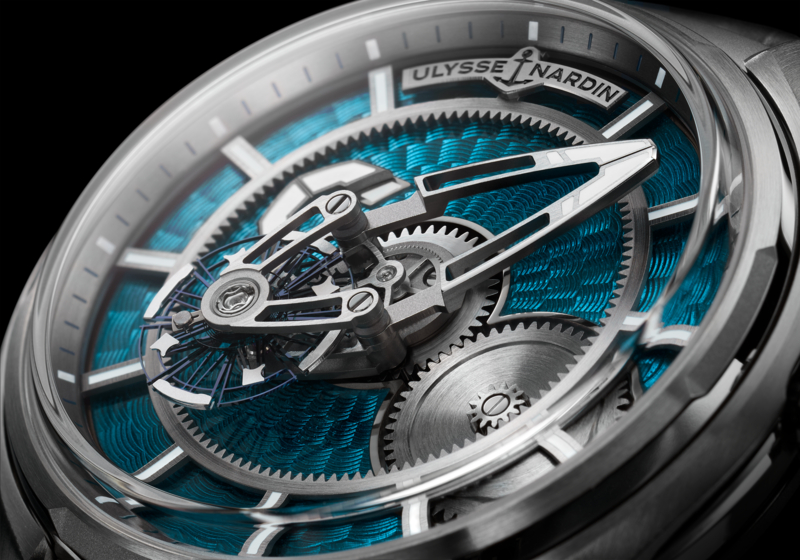
A FREAK EVENT
BACKSTORY
In the spring of 2001, Ulysse Nardin changed the course of watchmaking history forever with the introduction of the revolutionary Freak. To look at, the first Freak posed lots of questions. It had no dial, no hands and no crown, and yet it was unmistakably a mechanical watch. How was this possible? Did it really work? And how did it work? No one had ever seen anything like it. Because there had never been anything like it before.
But that was only the start of the story. Because beyond its unique appearance and function, it was powered by a gamechanging movement that contained a high-tech new watchmaking material: silicon.
Silicon was watchmaking wonderstuff. Conspicuous in its silvery blue, it brought myriad benefits to a mechanical watch. It was lightweight, elastic, almost completely frictionless, and highly resistant to magnetism, shocks and changes in temperature. On top of this, it could also be produced in unusual shapes and to fine tolerances. It was the perfect material for creating high-tech, ultra-modern mechanical watch components.
Indeed, mechanical watches with silicon parts, it was quickly established, would be more precise, more accurate and more reliable. This made the Freak a line-in-the-sand watch. And it meant a new chapter in watchmaking had begun, almost three centuries after the last.
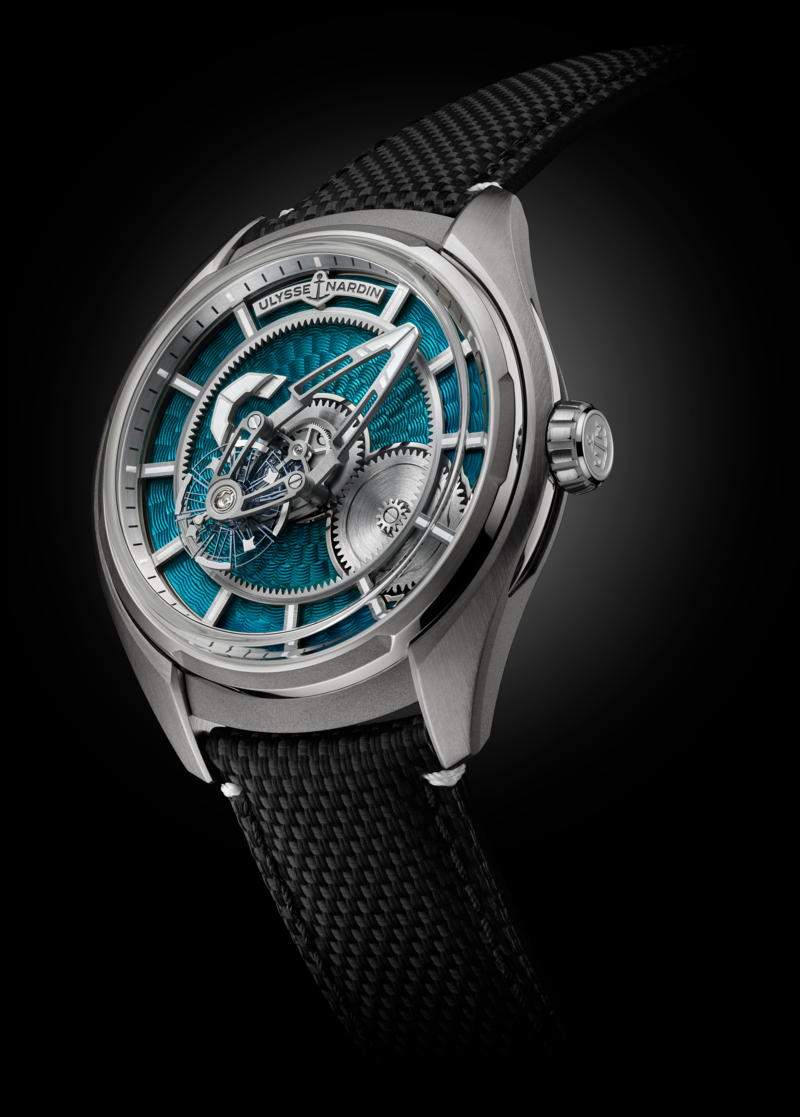
A FREAK EVENT
The Freak took its name from the maverick, disruptive, rulebreaking spirit that spawned it and quickly became known for its daring aesthetic, unconventional functionality and wild technical innovation. In time, it would become a flagship for Ulysse Nardin, and a new icon for Swiss watchmaking, recognised all over the world and revered by collectors. There’s still nothing quite like the Freak.
Its influence would spread far and wide. Seeing the advanced properties of silicon platformed by the Freak, countless others would explore its potential so that almost a quarter of a century later, it has become a familiar watchmaking material. But the Freak was first.
Meanwhile, Ulysse Nardin continued to pioneer the use of silicon, and the Freak design. Today, the Freak catalogue is ripe with challenging expressions of the original concept, each new model release acting as a punctuation mark in the story of mechanical watchmaking. Such has been its impact that The New York Times pronounced that the Freak had “changed the face of contemporary watchmaking”.
The Freak One leads the contemporary line, winning the prestigious
Grand Prix d’Horlogerie de Genève’s Iconic Watch Prize in 2023.
The Freak S continues to inspire awe and wonder with a threedimensional movement that rests under the glass like a spaceship preparing for intergalactic adventures. And the Freak X, with the gently ironic addition of a crown, has become the so-called “daily Freak”.
But no matter how much time passes and no matter what form it takes, the Freak remains a radical. An iconoclast. The watch that changed watchmaking forever.

ANATOMY OF A FREAK
NO DIAL
What might look like a dial isn’t a dial. The Freak’s “no dial” DNA means the movement’s components sit direct ly under the glass inst ead. What the Freak does have is an hour disc that makes a full rotation twice a day to indicate the hour. Here, the disc is decorated with traditional guilloché and enamel, fusing traditional métiers d’art techniques and st ate-of-the-art mechanics together.
NO HANDS
The unconventional Freak X doesn’t have conventional hands. Inst ead, its one-hour orbital carousel tourbillon act s as the minute hand, while the hour hand is indicated by a pointer on a rotating disc that sits under the movement.
SILICON
One of the Freak’s signatures is the use of silicon in place of traditional metals for some of the movement’s moving parts. When Ulysse Nardin pioneered silicon in 2001, it was a horological revelation. Today, the company continues to pioneer silicon for components such as the Freak X’s oversized oscillator and escapement because of its lightweight, elast ic, frict ionless and highly resist ant properties.
WAVES OF ENAMEL
The Freak X Enamel Seddiqi’s hour disc is decorated using two decorative techniques, guillochage and enamelling, both of which require rare artisanal skills and techniques to accomplish. In this unique watch, the guilloché wave patt ern is enamelled in an elect ric crepuscular “Yas Blue”, insp ired by the mesmerising evening light of the Middle East .
SUPPORT CASE
Wrapping the Freak X’s unique movement architect ure and hand-fi nished métiers d’art hour disc is a 43 mm grey titanium case with a matching bezel and winding crown. The watch is set on a black rubber “ballist ic” st rap and water-resist ant to 50 metres.




